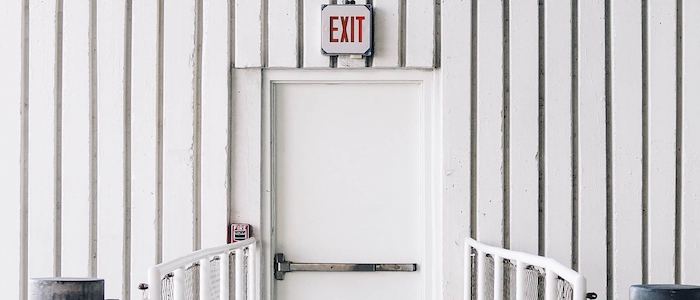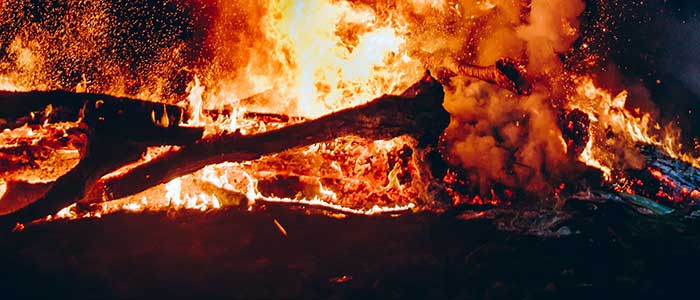Dashpivot article – Fire Door Inspection requirements
Fire Door Inspection Requirements
In this article, we discuss fire door inspection requirements to better prepare your organisation to avoid fire hazards that can impact your workplace's overall productivity and profitability.

What are the fire door inspection regulations?
Fire door inspection regulations are used as a basis to check if the fire doors are reliable in terms of integrity, and effectiveness in preventing the start of a fire and spread of smoke. Commercial buildings and non-domestic properties are required to install fire doors to ensure the occupants are safe from any fire hazards, and to secure fire escape routes. It’s important to take note that these regulations are standardised to safeguard lives and should be complied with regular inspections, reports, and safety audits.
The inspection regulations of fire door inspections may vary depending on which building codes and standards are being followed, and the contents of your inspection checklist and reports should be clearly aligned in the referenced regulations. These may vary by country, region, and local jurisdiction.
In the US, the NFPA 80 (National Fire Door Association Publication 80) standard is usually observed for fire doors and other opening protectives inspections, and enables us to easily answer questions like, "how often do fire doors need to be inspected?".
In the UK, they follow the standard BS 9999, which is the code of practice for fire safety in design, management and use of buildings. It’s UK’s standard that provides the best framework for fire safety and even contains self-assessment tools. In Europe, they comply with EN 16034 which is a set of European standards that provide specifications for the technical characteristics of fire resistant and smoke control products, including fire doors.
Aside from the mandated regular inspections laid out in the standards being followed, authorities may also require inspections in the building. It could be the fire safety authorities, insurance companies, or building inspectors.
What are the fire door inspection requirements?
As mentioned, fire door inspection requirements may vary depending on which regulations are being followed and complied. These requirements provide clarity and guidance on what building owners and managers should take note upon routine inspection checks, the criteria to be followed for installation and maintenance, and corrective actions like immediate repairs and replacements.
Standards and requirements may vary, but they follow a common goal which is to safeguard lives and secure fire escape routes. Below is a general summary of fire door inspection requirements from common international standards.
-
Inspection frequency should be annually, every after installation, every after maintenance work, and every after repair or replacement works. The frequency also varies depending on the type of fire door, type of building usage, occupancy type, and even the location of a fire door. Fire doors that are located in high traffic touchpoints that have a constant flow of people should be inspected more frequently.
-
Fire door inspections should be conducted by a qualified inspector, who has the background, skills, degree, certification, and professional expertise to inspect aligned to the set standards, regulations, and requirements. These inspectors typically use a fire door inspection checklist that they use, which contains the breakdown of the requirements and criteria. They run through the checklist in every fire door making sure they’re up to standards and that defects are addressed promptly, and repairs/replacements are done as swiftly as possible.
-
The inspections should be documented by keeping the checklists in record. Aside from the Fire Door Inspection Checklist, inspectors should also create a Fire Door Inspection Report or Form that outlines all doors that comply with the standard and those that need to be repaired and replaced immediately. It contains the corrective actions, operational and functional test results, notes on modifications or alterations, impact of defects/modifications on the general fire safety, recommended actions, and follow up actions.
-
Checks on fire door visuals, and operation or function should be done thoroughly and should adhere to the standards and specifications from the manufacturer. In general, there should be no signs of damage or alterations in the first installment of the door, frame, and seals. The fire door should also function properly. It should open, close, and latch without requiring excessive force. Inspect all the fire door hardware and other elements if they are operating properly. These include the hinges, locks, latches, closers, and panic hardware. If a replacement is necessary, it should be the same as the original part. The seals and gaskets should be properly attached and if their integrity checks out. Fire door manufacturers provide a specification on their products. The clearances between the door and frame, and the door and floor should be followed and should not exceed the specifications. The glass should be fire-rated and certified if it has undergone testing. There should be no cracks or breaks in the glass.
-
Exterior obstructions that block the door should be removed. These compromise secure fire safety routes.
-
Unauthorized modifications should not be done and that proper documentation and workflow should be followed in inspecting, installing, maintaining, and repairing fire doors.
Meet your fire door inspection requirements and compliance needs with better documentation
Create your digitised fire door inspection form so your team can perform inspections at ease using their mobile or tablet.
Inspections are done easily with a standardised format that you can create on your own by using pre-built functions and customising the contents that suit the specific standards and requirements by using a drag and drop form builder.
You can also make use of our own fire door inspection form that you can easily edit and update. Use your forms even offline and save progress without any problems.
Take photos from anywhere in the site or building and attach them in your forms to indicate which ones need repairs, fixing or replacement. You can also create your own sketches if needed.
Ensure compliance by utilising the digital sign off approval with either manual or fully contactless sign off, and save your forms online. For a form that requires more than one sign off, you can review the sign off approvals without having to chase things up.

Use & customise this free fire door inspection framework
A fire door inspection app can make it easy for your team to record fire door inspections on site, online or offline, via their mobile or tablet.
Keep track of upcoming fire door inspections due with the lists view, and schedule your next annual fire door inspection once you've finished this year's so you never get surprised. Create multiple forms for different types of fire door inspections, whether your annual, installation, or maintenance inspections.
Digital workflows make it easy to plan, track in-progress and review sign off approval effortlessly.

Q Mark Fire Door Installation template
Achieve Q Mark certification by using this digital Q Mark Fire Door Installation template.

Fire Drill Report template
This fire drill report template makes your fire drill reporting more complete and more actionable.

Fire Evacuation Plan template
Use this fire evacuation plan template to create comprehensive site or project specific fire evacuation plans.


